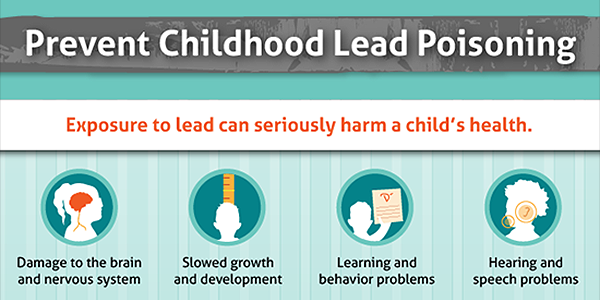Washington, DC–U.S. health, housing, and environmental agencies warn that some 3.6 million U.S. families risk permanent harm to their children because their homes are contaminated with lead-based paint.

That’s why the Centers for Disease Control and Prevention (CDC) has joined the U.S. Department of Housing and Urban Development (HUD), the U.S. Environmental Protection Agency (EPA), and other public and private partners to urge Americans to learn the facts about lead poisoning and have their homes and children tested during National Lead Poisoning Prevention Week, from October 25-31.
Lead poisoning remains a danger in American homes, often hiding in plain sight in lead-based paint. Protecting children from exposure to lead is important to lifelong good health. There is no safe blood lead level in children. Even low levels of lead in blood affect a child’s IQ, ability to pay attention, and academic achievement. And the toxic effects of lead exposure are irreversible.
Some children at higher risk of lead poisoning
Any child can be exposed to lead, but some children are at higher risk. Lower income families and those who live in homes built before 1978 with original leaded paint are among those at highest risk. Other common factors for risk include living near industrial facilities that work with lead, recently emigrating from countries with high levels of lead in the environment, and exposure to lead-containing products such as antique cookware and leaded crystal glassware.
Testing blood lead levels is the best way to tell if a child has been exposed to lead poisoning. As states develop plans for reopening following the COVID-19 pandemic, healthcare providers are encouraged to work with families to bring children up to date with testing. Children covered by Medicaid are eligible for free testing.
CDC advises parents to seek a blood lead test if they suspect their children have been exposed to lead. But the most important step that parents, doctors, and others can take is to prevent lead exposure before it occurs. For more information on lead exposure risk, visit CDC’s lead poisoning Frequently Asked Questions.



















